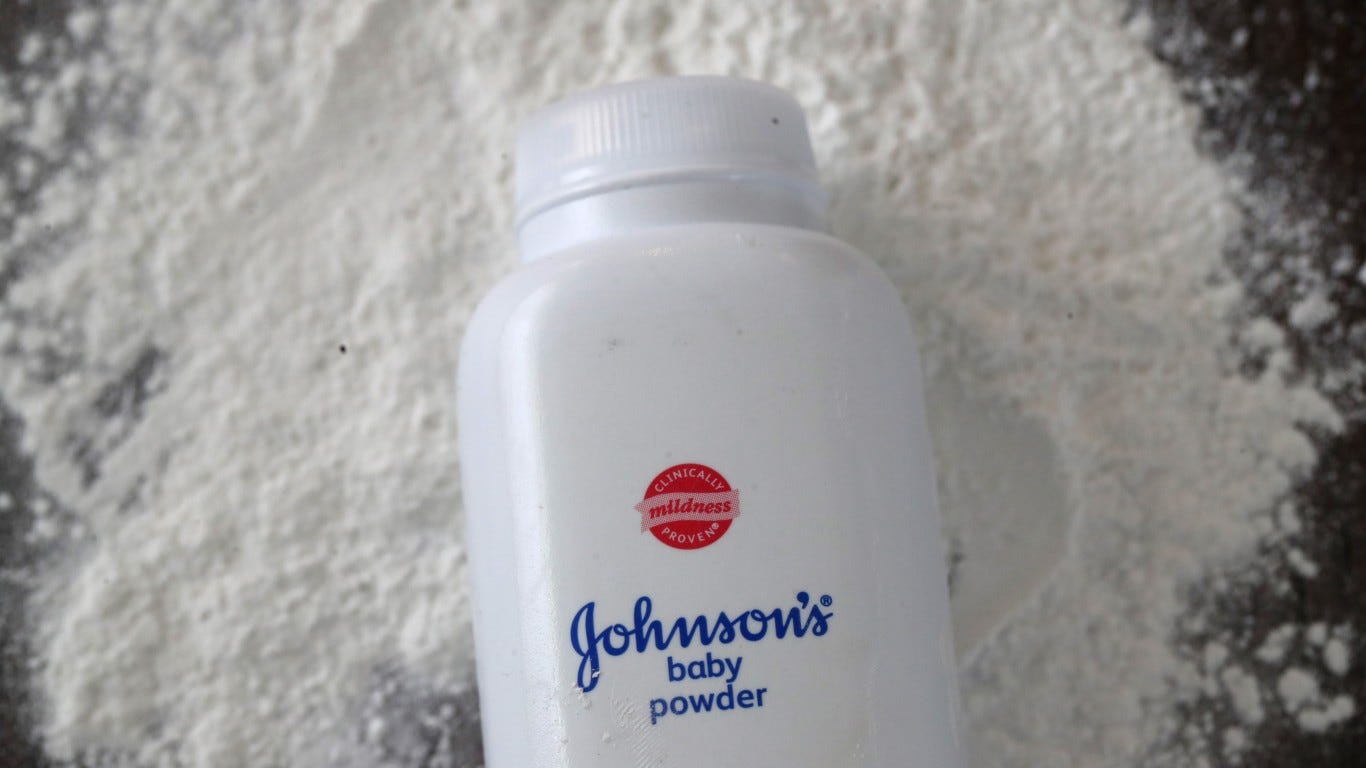
Baby powder is as common as diapers. But is it really safe? That's a question that the FDA is trying to answer.
Following years of scrutiny and thousands of lawsuits alleging that baby powder led to ovarian cancer, the U.S. Food and Drug Administration held a hearing Wednesday on the testing of asbestos in talc, the main ingredient in the Johnson & Johnson brand of baby powder.
It's the first time since 1971 that the FDA has evaluated regulations surrounding the testing of asbestos in talc in a public hearing.
Many of the lawsuits leveled against manufacturers of talc-based baby powder have been settled out of court, including one in California that was notably settled mid-trial.
The hearing, per Reuters, focused on testing recommendations from public health officials and expert witnesses from some of the suits.
A representative from Johnson & Johnson told USA TODAY in a statement before the hearing that they "look forward to a thorough review of the most effective and reliable ways to test for asbestos in cosmetic talc."
Johnson & Johnson has repeatedly emphasized the safety of its talc-based products — and in October, the company released a statement announcing that several third-party tests have shown no asbestos in their product. That statement followed a recall of a batch of baby powder revealed to have chrysotile asbestos.
Here are some answers to common questions about talc products:
What is talc and what is it used for?
Talc is a naturally occurring silicate mineral composed of magnesium, silicon, oxygen, and hydrogen, per the FDA. It's known as the softest mineral known to man.
It is similar in structure to asbestos, and the two are often found together in mines.
The Cosmetic, Toiletry and Fragrance Association says there are two different forms of it: industrial talc, which is often used in automotive plastics and rubber, and cosmetic talc.
Cosmetic talc has been widely used in baby powder. It's also used in cosmetics such as eye shadow, blush and foundation to absorb moisture, make makeup opaque and improve a product's feel, per the FDA.
Do studies link baby powder and cancer?
That remains unclear.
Findings as far back as the early 1970s have tied talc-based baby powder to ovarian cancer, according to the FDA. Recent reports from Reuters and the peer-reviewed journal Epidemiology have found that historical concerns over talc and ovarian cancer were downplayed by industry groups.
A comprehensive study of 250,000 women led by the U.S. government and published in January in the Journal of the American Medical Association (JAMA) found no strong evidence of a link between baby powder and ovarian cancer. The study, however, did not differentiate between talc-based baby powder and other baby powders that were made with alternatives such as cornstarch.
The American Cancer Society notes that other studies, using a different method from the JAMA study, have found "a small increase in risk" for ovarian cancer when women apply talc powder to their genitals.
Meanwhile, the International Agency for Research on Cancer — which is part of the World Health Organization — has classified talc as possibly carcinogenic.
A study published in October also found that contaminated talc has links to mesothelioma, a rare cancer that's usually linked to asbestos.
What about talc in makeup?
Again, it depends. The Campaign for Safe Cosmetics designates talc in its "Red List" of things to avoid in blush, eye shadow and face powder, citing the possible risks of baby powder for women.
Meanwhile, the Environmental Working Group's makeup database states that talc is mostly safe in cosmetics. As does skincare and cosmetics brand Paula's Choice, which says that talc in makeup "does not present a health hazard."
But it may not matter, anyway. Cosmetic chemist Victor Casale, who previously worked for MAC Cosmetics, told Byrdie that he changed the formula for a popular powder foundation for aesthetic reasons, not safety ones. The "dry" look talc-based cosmetics provide, he said, is no longer in line with current trends in makeup.
How is talc currently regulated?
Federal regulations on talc are relatively lax. Under the Food Drug and Cosmetic Act, per the FDA, most cosmetics made with talc do not have to be tested or approved by the FDA. They also do not require manufacturers to disclose safety information.
Current guidelines state that talc cannot have more than 20 parts per million (ppm) of lead and 3 parts per million of arsenic.
Crucially, they also cannot require manufacturers and retailers to recall products. The recall issued by Johnson and Johnson of its baby powder in October was a "voluntary recall," meaning that it was of the company's own accord.
Is it safe to use baby powder on babies?
Contrary to its label, pediatricians advise parents not to use baby powder — whether it's made with talc or not — for children and infants.
The American Association of Pediatrics recommends against using baby powder, period. Per the organization's Red Book, its reference guide to pediatric diseases, "parents should not use talc-containing products for infant and child care."
It may cause pneumoconiosis, a lung disease caused by the inhalation of dust — which the AAP notes may happen if a baby powder container accidentally spills.
If powder is used to prevent diaper rash, however, pediatricians advise using it as far way from a baby as possible.
“Use as little as possible, probably put it on your hands and transfer to the diaper area or gently sprinkle to the diaper area," said Mayo Clinic pediatrician David Soma.
Contributing: Cara Kelly, Joel Shannon and Mary Bowerman, USA TODAY
"powder" - Google News
February 06, 2020 at 05:35AM
https://ift.tt/38dyuXX
Is baby powder safe? Does it cause cancer? And how is it regulated? - USA TODAY
"powder" - Google News
https://ift.tt/340CkR7
Shoes Man Tutorial
Pos News Update
Meme Update
Korean Entertainment News
Japan News Update

0 Comments:
Post a Comment